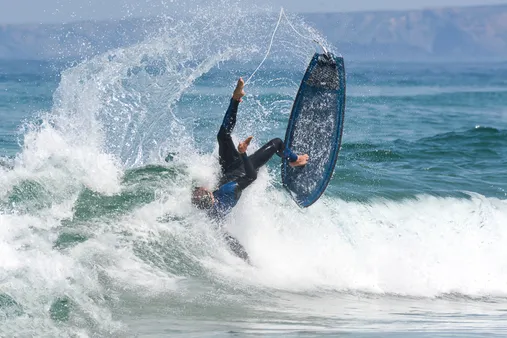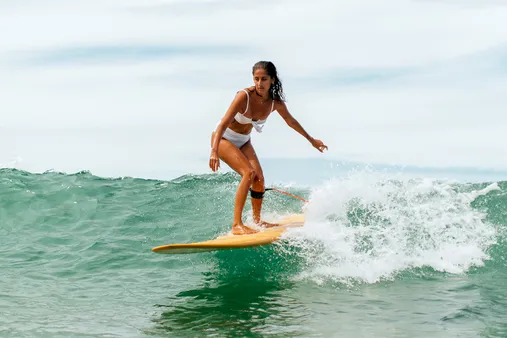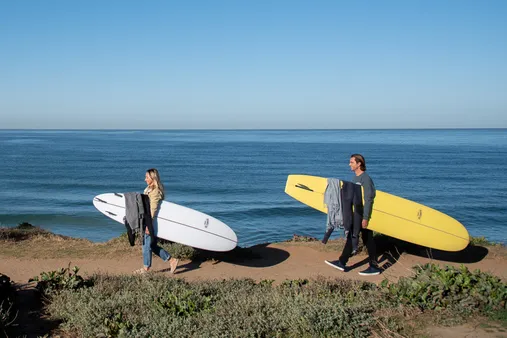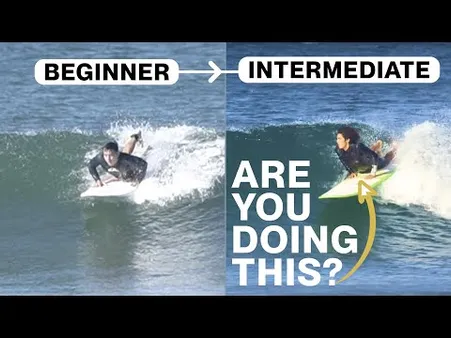Table of Contents
Are you ready to catch your first wave and experience the thrill of surfing? At Kizworld, we're passionate about helping beginners embark on their surfing journey. In this comprehensive guide, we'll take you through the basics of surfing, from selecting the right equipment to finding the perfect spot. We'll also cover essential safety tips and common mistakes to avoid. Whether you're a complete novice or just starting, kizworld is your trusted resource for everything you need to know about How to get started with surfing as a beginner.
How to Get Started with Surfing as a Beginner: A Comprehensive Guide
I. Finding the Right Place to Surf
Finding the Right Place to Surf
Safety First
- Choose a location with lifeguards on duty.
- Surf only in designated areas.
- Check the surf conditions before you go out.
- Use a leash to keep your board attached to you.
- Wear sunscreen, a hat, and surf-appropriate clothing.
Surfing can be a dangerous sport, so it's important to prioritize your safety. Always check the surf conditions before venturing out. Respect the power of waves and currents, and abide by all posted warnings and safety regulations.
Choose a Spot Suitable for Your Skill Level
Beginner | Intermediate | Advanced |
|---|---|---|
Sandy beach break | Point break or reef break | Big-wave break |
Small waves (2-3 feet) | Medium waves (4-6 feet) | Large waves (7 feet and up) |
Gentle slope | Steeper slope | Very steep slope |
Depending on your skill level, choose a location that has the appropriate waves and conditions for you to ride. Beginners should look for spots with smaller waves that break on sandy beaches.
Find a Location withConsistent Waves
If you want to enjoy a day of consistent surfing, it's best to choose a spot with constant waves. You can find information about wave conditions online or by talking to local surfers.
Consider the Crowd
Also consider the crowd and decide if a particular location is appropriate for you. If you like surfing in a lively atmosphere and don't mind sharing the waves with others, a popular spot may be a good choice. However, if you prefer a more peaceful experience, look for a quieter spot.
Check the Accessibility
Consider how accessible the surf spot is. Some locations may be difficult to reach, especially if you're carrying a surfboard. If you have limited mobility or transportation, choose a spot that is easily accessible.
II. Preparing for Your First Surf Lesson
Preparing for Your First Surf Lesson
Choosing the Right Location
When selecting a spot for your first surf lesson, opt for a beach with gentle waves, a sandy bottom, and a lifeguard on duty. These factors ensure a safe and enjoyable learning experience.
Consider enrolling in a group or private surf lesson. Group lessons offer a communal learning environment, while private lessons provide personalized instruction tailored to your specific needs. Choose the format that best suits your learning preferences and budget. For equipment, rent or borrow a surfboard, wetsuit, and leash. Ensure proper fit and functionality to optimize your surfing experience.
Understanding Surf Etiquette
- Before entering the water, observe the local surfing community and adhere to their unspoken rules and norms, known as surf etiquette.
- Respect other surfers by yielding to those with the right of way, typically determined by their position on the wave.
- Paddle out calmly and avoid crossing another surfer's path. If you accidentally do, apologize and maintain a safe distance.
Remember, surfing is about having fun and respecting the ocean and fellow surfers. Embrace the aloha spirit and embody the essence of camaraderie and mutual respect.
III. Paddling and Positioning
Mastering Paddling Techniques
Skill | Description |
|---|---|
Prone Position | Adopt a streamlined position, lying flat on the surfboard with your body straight and your hands positioned near the center of the board. |
Paddle Entry | Begin paddling by placing your hands palms down on the board and pushing them forward in a smooth, rhythmic motion. |
Paddle Stroke | Power your strokes by extending your arms and pulling them back towards your body, keeping your elbows close to your sides. |
"'Surfing is a state of mind. It's about being in the present moment, feeling the energy of the waves, and connecting with nature. When you're out there on your board, everything else fades away, and you're just one with the ocean." - Laird Hamilton, legendary surfer
Positioning for Catching Waves
- Locate the "sweet spot" of the surfboard, typically around the middle, and position yourself there.
- Keep your weight evenly distributed on both feet and maintain a slightly crouched stance.
- Orient your body perpendicular to the shore, with your toes pointed towards the beach.
As a beginner, start paddling when the wave is still far away, gradually increasing your paddling speed as the wave approaches. This technique helps you catch the wave early and ensures a smoother ride.
IV. Catching Your First Wave
Recognizing the Ideal Wave
Identify waves that are breaking gently and have a gradual slope. Avoid waves that are too steep or breaking too close to the shore. As you gain experience, you'll develop a keen eye for selecting the perfect wave.
Executing the Pop-Up Maneuver
- When you feel the wave lifting the surfboard, quickly shift your weight onto your front foot and extend your back leg.
- Simultaneously, push down on the surfboard with your front hand and pull up with your back hand, propelling yourself into a standing position.
- Keep your knees bent and your weight centered over the board to maintain balance.
"Surfing is not a sport. It's a way of life. It's a culture. It's a religion." - Kelly Slater, 11-time world surfing champion
Riding the Wave
Once you're standing, keep your body relaxed and maintain a slight forward lean. Use your arms for balance and adjust your weight distribution as needed. As the wave propels you forward, subtly shift your weight from your front foot to your back foot, and vice versa, to control the direction of your ride.
V. Taking Your First Surf Lesson
Taking Your First Surf Lesson
The Basics of Surfing
Surfing is a thrilling water sport that involves riding waves on a surfboard. It's a great way to get exercise, enjoy the ocean, and have some fun. If you're new to surfing, it's important to take a lesson from a qualified instructor. They can teach you the basics of surfing, including how to paddle out, catch a wave, and ride it safely.
When you're ready to take your first surf lesson, here are a few things you'll need:
- A surfboard
- A wetsuit
- Sunscreen
- A leash
- A towel
Once you have your gear, you're ready to head to the beach. Find a spot with small waves and a sandy bottom. Avoid areas with rocks or coral.
When you're ready to start surfing, paddle out to a spot where the waves are breaking. Once you're in position, lie down on your surfboard with your stomach down. Place your hands on the sides of the board and kick your feet to start paddling.
When you see a wave coming, turn your body so that you're facing the wave. As the wave approaches, stand up and start paddling hard. Once you're on your feet, keep your weight centered and your knees bent. Use your arms to balance yourself and your legs to control the board.
As you ride the wave, you'll need to adjust your weight and position to stay balanced. If you start to lose your balance, don't panic. Just fall off the board and try again.
Surfing can be a challenging sport, but it's also a lot of fun. With a little practice, you'll be riding waves like a pro in no time.
Tips for Beginners
Here are a few tips for beginners who are just starting out:
- Start with small waves. As you get more comfortable, you can start surfing bigger waves.
- Don't be afraid to fall. Everyone falls when they're first learning to surf.
- Be patient. It takes time to learn how to surf. Don't get discouraged if you don't get it right away.
- Have fun! Surfing is a great way to get exercise, enjoy the ocean, and have some fun.
If you're looking for a fun and challenging water sport, surfing is a great option. With a little practice, you'll be riding waves like a pro in no time.
Here are some related posts that you might find helpful:
- How to Choose the Right Surfboard for Your Skill Level and Style
- The Benefits of Surfing for Fitness and Fun
- The Best Surfing Equipment and Accessories
VI. After Your First Surf Lesson
After Your First Surf Lesson
Congratulations on taking your first surf lesson! You've now experienced the thrill of riding waves and the joy of being in the ocean. But your surfing journey is just beginning. To improve your skills and become a confident surfer, it's important to practice regularly and continue learning. Here are a few tips to help you get started:
Practice Regularly
The best way to improve your surfing skills is to practice as often as you can. Try to surf at least once a week, or more if possible. The more you surf, the more comfortable you'll become on your board and the better you'll be at catching waves and riding them. The following article provides some great reasons why people love surfing: The Benefits of Surfing for Fitness and Fun
Find a Good Surf Spot
Not all surf spots are created equal. Some spots are better for beginners than others. When choosing a surf spot, look for one with gentle waves and a sandy bottom. Avoid spots with strong currents or rocky shores. For more information on finding the best surf spots, read here: How to Find the Best Surfing Spots and Conditions
Get the Right Equipment
Having the right equipment can make a big difference in your surfing experience. Make sure you have a surfboard that is the right size and shape for your skill level and the waves you'll be surfing. You'll also need a wetsuit to keep you warm in the water, and a leash to keep your surfboard attached to you. For more help with choosing the right equipment, read our article: The Best Surfing Equipment and Accessories
Take a Surf Lesson
If you're a beginner, taking a surf lesson is a great way to learn the basics of surfing and get started on the right foot. A good surf instructor can teach you how to paddle out, catch waves, and ride them safely. Surf lessons are also a great way to meet other surfers and learn about the surfing culture.
Be Patient
Surfing is a challenging sport, and it takes time to learn. Don't get discouraged if you don't catch a wave right away. Just keep practicing and you'll eventually get the hang of it. Remember, surfing is all about having fun, so relax and enjoy the ride!
Tip | Description |
|---|---|
Practice regularly | Surf at least once a week to improve your skills. |
Find a good surf spot | Look for a spot with gentle waves and a sandy bottom. |
Get the right equipment | Choose a surfboard that's the right size and shape for you. |
Take a surf lesson | A good surf instructor can teach you the basics of surfing. |
Be patient | Surfing takes time to learn, so don't get discouraged. |
Once you've mastered the basics of surfing, you can start to learn more advanced techniques, such as riding different types of waves, performing tricks, and surfing in different conditions. With a little practice and dedication, you'll be able to surf anywhere in the world and enjoy the thrill of this amazing sport.
VII. Conclusion
As you progress in your surfing journey, remember to prioritize safety, respect the ocean and other surfers, and embrace the learning process. Surfing is a sport that rewards dedication and practice, and with time and effort, you'll be riding waves with confidence and experiencing the pure joy of gliding across the water. So, grab your board, find a suitable spot, and dive into the thrilling world of surfing!